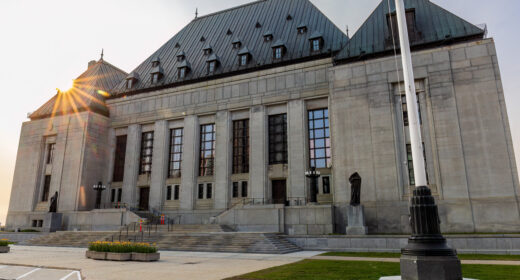Do you know that a typical Internet domain name consists of two parts? The top-level domain is to the right of the “dot”; and the second-level domain is to the left. Thus, in our firm’s domain name – nelligan.ca – “ca” (which stands for Canada) is the top-level domain and “nelligan” is the second-level domain.
Between January and May 2012, the Internet Corporation for Assigned Names and Numbers (ICANN) received 1930 applications for its new generic Top-Level Domain (gTLD) program. Such new gTLDs can literally be anything. Examples from some of the applied-for gTLDs include: .app, .coffee and .taxi.
Once approved, the owner of a gTLD will act as a “gTLD operator” to administer domain name applications having that particular gTLD. For instance, if Company XYZ applied for and was granted the gTLD for “.comedy”, then Company XYZ will administer all subsequent applications for domain names ending with this gTLD, such as “canadaeh.comedy”.
In view of the vast number of potential new gTLDs, trademark owners should be concerned that one or more of these proposed new domains might infringe their trademarks.
Fortunately, new mechanisms have been created to protect the rights of trademark owners whose trademarks might potentially be infringed by a proposed gTLD. However, these mechanisms require that trademark owners act quickly.
Trademark owners have seven months, starting on June 13, 2012, to file a formal objection to a proposed gTLD. The objection could be based on the fact that the proposed gTLD infringes a trademark or is confusingly similar to an existing Top-Level Domain or a proposed gTLD. An infringing application can be terminated.
Once a new gTLD is approved, trademark owners must be concerned with preventing infringing domain names in the “second-level”. Thus, it is important to check for trademark infringements on the “left” and “right” of the dot.
A Trademark Clearinghouse has been set up by ICANN and others to assist trademark owners. For trademarks registered with the Trademark Clearinghouse, gTLD operators are required to allow trademark owners to pre-register domain names that include the trademark for at least 30 days before the new gTLD is launched. During this period, gTLD operators are also required to notify trademark owners when someone attempts to register a domain name identical to the owner’s mark. A similar notification service must also be provided for 60 days after the new gTLD is launched. Trademark owners should consider registering their trademarks with the Trademark Clearinghouse in order to take advantage of these services.
Since gTLD operators are only required to provide these services for a limited time, trademark owners should also be aware of two other avenues to protect themselves from domain name abuses. First, in clear cases of trademark abuse, a trademark owner can challenge the domain name under the Uniform Rapid Suspension System (URS) and have it suspended for the remainder of the registration period. Second, where a remedy is required against the gTLD operator itself, a trademark owner can have recourse to the more involved Post-Delegation Dispute Resolution Procedure (PDDRP).
To counteract the threat of misuse of your trademark in cyber space, you should review the list of proposed gTLDs and be prepared to vigorously defend your rights using the mechanisms described above.
Please feel free to contact us for further information on how best to safeguard your marks.


